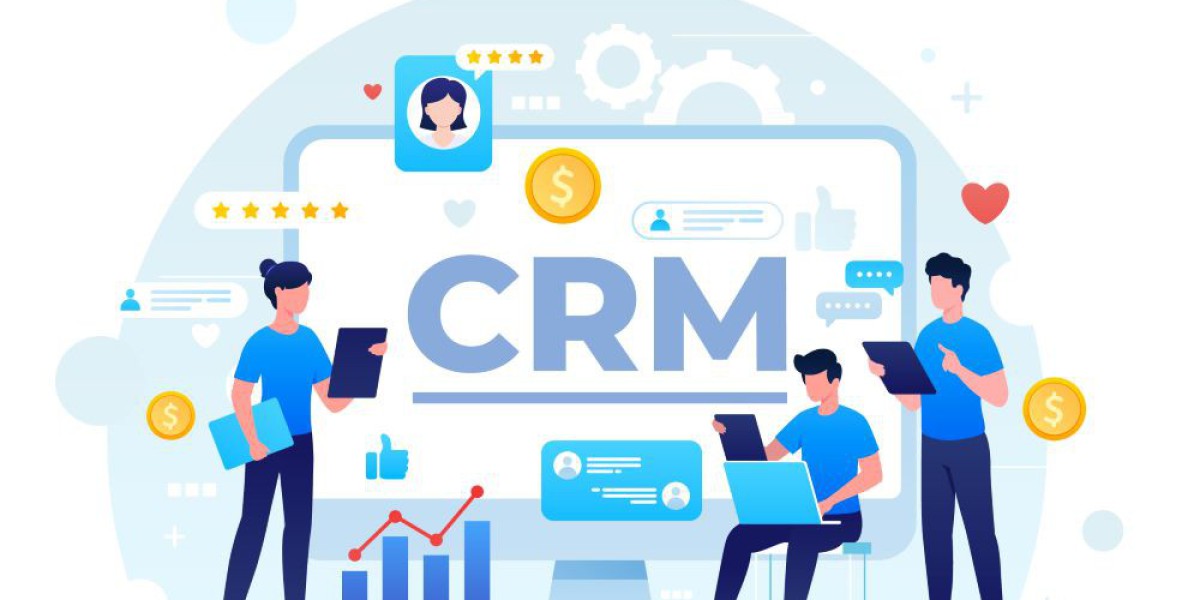Introduction
In today's hyper-connected world, Customer Relationship Management (CRM) systems have become indispensable tools for businesses aiming to streamline operations, enhance customer experiences, and drive revenue growth. As technology continues to evolve, the integration of IoT (Internet of Things) into CRM implementation has emerged as a game-changer, offering unprecedented insights, cost-saving opportunities, and efficiency gains. This article delves into the synergy between CRM implementation and IoT, exploring how businesses can leverage this integration to maximize benefits and stay ahead in the competitive landscape.
Understanding CRM Implementation
CRM implementation refers to the process of deploying CRM software to manage interactions with current and potential customers. It encompasses various activities, including data collection, analysis, customer segmentation, marketing automation, and customer service management. Traditionally, CRM systems have relied on manual data entry and analysis, limiting their effectiveness in capturing real-time insights and delivering personalized experiences.
However, with advancements in technology, particularly the proliferation of IoT devices, CRM implementation has undergone a significant transformation. IoT refers to a network of interconnected devices embedded with sensors, software, and other technologies, enabling them to collect and exchange data. By integrating IoT capabilities into CRM systems, businesses can access a wealth of real-time information, allowing for more informed decision-making and proactive customer engagement.
Cost-Saving Opportunities with IoT-enabled CRM
One of the key advantages of IoT-enabled CRM implementation is the ability to identify and capitalize on cost-saving opportunities across various business functions. Here are some ways in which businesses can leverage this integration to optimize their operations:
Predictive Maintenance: IoT sensors embedded in machinery and equipment can provide real-time data on performance metrics, such as temperature, pressure, and vibration. By analyzing this data within the CRM system, businesses can predict potential equipment failures before they occur, enabling proactive maintenance and reducing downtime. This predictive approach not only extends the lifespan of assets but also minimizes repair costs and enhances overall operational efficiency.
Inventory Management: IoT sensors deployed in warehouses and storage facilities can track inventory levels in real time, automatically triggering reorders when stock levels are low. By integrating this data into the CRM system, businesses can ensure optimal inventory levels, minimize stockouts, and reduce carrying costs. Moreover, by analyzing historical consumption patterns and customer preferences, businesses can optimize their product assortment and avoid overstocking obsolete items.
Energy Efficiency: IoT-enabled CRM systems can monitor energy consumption patterns within facilities and identify opportunities for optimization. For instance, sensors can adjust lighting, heating, and cooling systems based on occupancy levels, leading to significant energy savings. By integrating energy usage data with customer information, businesses can also identify opportunities to incentivize energy-efficient behaviors among customers, such as offering rewards for reducing consumption during peak hours.
Supply Chain Optimization: IoT sensors embedded in transportation vehicles and shipping containers can provide real-time visibility into the movement of goods across the supply chain. By integrating this data with the CRM system, businesses can track shipments, optimize routes, and mitigate delays. This enhanced visibility enables businesses to identify bottlenecks, streamline logistics processes, and reduce transportation costs.
Technological Advancements in IoT-enabled CRM
The integration of IoT into CRM implementation has been made possible by several technological advancements, paving the way for enhanced functionality and usability. Here are some notable developments in this space:
Edge Computing: Traditional CRM systems relied on centralized servers to process and analyze data, leading to latency issues and bandwidth constraints, especially when dealing with large volumes of IoT data. Edge computing involves processing data closer to the source, i.e., at the edge of the network, where IoT devices are deployed. By leveraging edge computing capabilities, businesses can analyze data in real time, reducing latency and enabling faster decision-making.
Artificial Intelligence (AI) and Machine Learning (ML): AI and ML algorithms play a crucial role in harnessing the vast amounts of data generated by IoT devices. By analyzing historical data and identifying patterns, AI-powered CRM systems can provide predictive insights, personalized recommendations, and automated actions. For example, AI algorithms can analyze customer behavior patterns to anticipate their needs and preferences, enabling businesses to deliver targeted marketing campaigns and proactive customer service.
Blockchain Technology: Blockchain technology offers a decentralized and immutable ledger for recording transactions, enhancing transparency and security in CRM systems. By integrating blockchain technology with IoT-enabled CRM systems, businesses can ensure the integrity and authenticity of customer data, thereby enhancing trust and compliance. For instance, blockchain-based smart contracts can automate and enforce agreements between parties, reducing the need for intermediaries and streamlining business processes.
Augmented Reality (AR) and Virtual Reality (VR): AR and VR technologies hold immense potential for enhancing customer experiences in CRM systems. By integrating AR/VR capabilities, businesses can offer immersive product demonstrations, virtual tours, and interactive training sessions to customers. For example, a furniture retailer can use AR technology to allow customers to visualize how a piece of furniture would look in their home before making a purchase decision. This not only enhances the shopping experience but also reduces the likelihood of returns, thereby improving customer satisfaction and loyalty.
Challenges and Considerations
While the integration of IoT into CRM implementation offers compelling benefits, businesses must address several challenges and considerations to maximize success:
Data Security and Privacy: The proliferation of IoT devices increases the risk of data breaches and cyberattacks, posing significant security and privacy concerns. Businesses must implement robust security measures, such as encryption, authentication, and access controls, to safeguard sensitive customer data. Moreover, compliance with data protection regulations, such as GDPR and CCPA, is paramount to maintain customer trust and avoid regulatory penalties.
Integration Complexity: Integrating IoT devices with existing CRM systems can be complex and challenging, requiring seamless interoperability between disparate technologies and platforms. Businesses must carefully evaluate compatibility issues, scalability requirements, and integration costs before embarking on IoT-enabled CRM projects. Moreover, partnerships with experienced technology vendors and service providers can help navigate the integration process more effectively.
Data Governance and Quality: The success of IoT-enabled CRM initiatives hinges on the availability of high-quality data that is accurate, reliable, and relevant. Businesses must establish robust data governance policies and processes to ensure data integrity, consistency, and compliance. This includes defining data ownership, establishing data quality standards, and implementing data cleansing and validation procedures.
Change Management: Implementing IoT-enabled CRM systems requires organizational buy-in and cultural change to ensure adoption and alignment with business objectives. Businesses must invest in change management initiatives, such as training programs, communication strategies, and stakeholder engagement, to foster a culture of innovation and collaboration. Moreover, ongoing monitoring and evaluation are essential to track performance metrics, identify areas for improvement, and drive continuous optimization.
Conclusion
CRM implementation in the age of IoT presents unprecedented opportunities for businesses to enhance customer experiences, drive operational efficiency, and gain a competitive edge. By leveraging IoT capabilities within CRM systems, businesses can unlock real-time insights, automate processes, and deliver personalized interactions at scale. However, realizing the full potential of IoT-enabled CRM requires careful planning, strategic investment, and proactive management of challenges. As technology continues to evolve, businesses must embrace innovation and agility to stay ahead in the rapidly changing landscape of customer relationship management.



